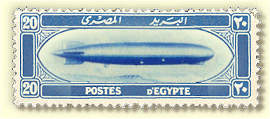

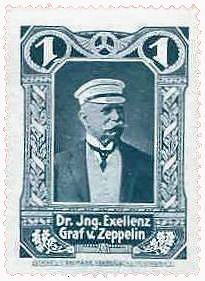 The German company Luftschiffbau Zeppelin, owned by Count Ferdinand Graf von Zeppelin, was the world's most successful builder of rigid airships. Zeppelin flew the world's first untethered rigid airship, the LZ-1, on July 2, 1900, near Lake Constance in Germany, carrying five passengers. The cloth-covered dirigible, which was the prototype of many subsequent models, had an aluminium structure, 17 hydrogen cells, and two 15-horsepower (11.2-kilowatt) Daimler internal combustion engines, each turning two propellers. It was about 420ft (128m) long and 38ft (12m) in diameter and had a hydrogen-gas capacity of 399,000 cubic feet (11,298 cubic meters). During its first flight it flew about 3.7 miles (6km) in 17 minutes and reached a height of 1,300ft (390m). However, it needed more power and better steering and experienced technical problems during its flight that forced it to land in Lake Constance. After further tests three months later, it was scrapped.
The German company Luftschiffbau Zeppelin, owned by Count Ferdinand Graf von Zeppelin, was the world's most successful builder of rigid airships. Zeppelin flew the world's first untethered rigid airship, the LZ-1, on July 2, 1900, near Lake Constance in Germany, carrying five passengers. The cloth-covered dirigible, which was the prototype of many subsequent models, had an aluminium structure, 17 hydrogen cells, and two 15-horsepower (11.2-kilowatt) Daimler internal combustion engines, each turning two propellers. It was about 420ft (128m) long and 38ft (12m) in diameter and had a hydrogen-gas capacity of 399,000 cubic feet (11,298 cubic meters). During its first flight it flew about 3.7 miles (6km) in 17 minutes and reached a height of 1,300ft (390m). However, it needed more power and better steering and experienced technical problems during its flight that forced it to land in Lake Constance. After further tests three months later, it was scrapped. Zeppelin continued to improve his design and build airships for the German Government. In June 1910 the Deutschland became the world's first commercial airship. The Sachsen followed in 1913. Between 1910 and the beginning of World War I in 1914, German zeppelins flew 107,208 miles (172,535km) and carried 34,028 passengers and crew safely. At the beginning of the war Germany had ten zeppelins. Dr Hugo Eckener, a German aeronautical engineer, helped the war effort by training pilots and directing the construction of zeppelins for the Germany Navy. By 1918, 67 zeppelins had been constructed, and 16 survived the war. Those that had not been captured were surrendered to the Allies under the terms of the Treaty of Versailles, and it looked as though the Zeppelin company would soon disappear. However, Eckener, who had assumed the company's helm upon Count Zeppelin's death in 1917, suggested to the American Government that the company build a huge zeppelin for the US military, which would allow it to stay in business. On October 13, 1924, the US Navy received the German ZR3 (also designated the LZ-126), delivered personally by Eckener. The airship, renamed the Los Angeles, could accommodate 30 passengers and had sleeping facilities similar to those on a Pullman railway coach. The Los Angeles made some 250 flights, including trips to Puerto Rico and Panama. It also pioneered aircraft launch and recovery techniques that would later be used on the US airships Akron and Macon. When the various restrictions imposed on Germany by the Treaty of Versailles were lifted and the country was again allowed to construct airships, three giant constructions followed: the LZ-127 Graf Zeppelin, LZ-l29 Hindenburg, and LZ-l30 Graf Zeppelin II. The Graf Zeppelin is considered the finest airship ever built. It flew more miles than any had done to that time or would do in the future. Its first flight was on September 18, 1928. Its total volume comprised 75,000 m³ of supporting gas and 30,000 m³ of fuel for the engines. It was 236m long and had a maximum diameter of 30.5m. Five Maybach engines each of 530 HP brought a total output of 2650 HP. Its top speed was 110 km/h, and its range was increased to 12,000 km. During the ten years the Graf Zeppelin flew, it made 590 flights including 144 ocean crossings. It flew more than one million miles (1,609,344km), visited the United States, the Arctic, the Middle East, and South America, and carried 13,110 passengers. Randolph Hearst, the American newspaper publisher, secured himself the reporting monopoly for the world tour, by which its financing was guaranteed. Enough experience had been gathered on numerous journeys to attempt to circle the globe, and only three intermediate landings were planned. Hearst's only stipulation in return for the financing was that the flight should start from the Statue of Liberty in New York. So the LZ-127 travelled there first from Friedrichshafen for the official start on August 7, 1929. She was back in Friedrichshafen on August 10, and started eastwards a second time on the morning of August 15. 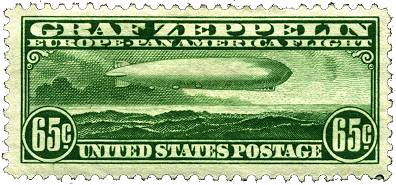 After a stopover in Tokyo, she headed on to her destination, Los Angeles, on the most difficult part of the trip, the crossing of the Pacific Ocean, which no-one had ever crossed non-stop in this way before.
The airship reached America after 68 hours - and San Francisco greeted her in the already familiar way with the wailing of all available sirens. After landing in Los Angeles, the LZ-127 was further on her way straight across the North American continent to Lakehurst, New Jersey, where the first journey around the world by air officially ended for the Americans. Though the Zeppelin team was already used to being received enthusiastically, the reception in New York surpassed anything they had experienced. The Zeppelin had - so it seemed - conquered the skies for all times. The trip took 12 days - less time than the ocean trip from Tokyo to San Francisco.
After a stopover in Tokyo, she headed on to her destination, Los Angeles, on the most difficult part of the trip, the crossing of the Pacific Ocean, which no-one had ever crossed non-stop in this way before.
The airship reached America after 68 hours - and San Francisco greeted her in the already familiar way with the wailing of all available sirens. After landing in Los Angeles, the LZ-127 was further on her way straight across the North American continent to Lakehurst, New Jersey, where the first journey around the world by air officially ended for the Americans. Though the Zeppelin team was already used to being received enthusiastically, the reception in New York surpassed anything they had experienced. The Zeppelin had - so it seemed - conquered the skies for all times. The trip took 12 days - less time than the ocean trip from Tokyo to San Francisco. 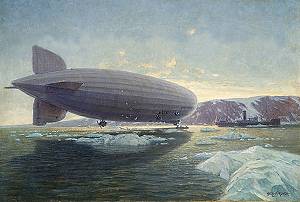 Not only the round-the-world trip, but also the polar journey - which took place in 1931 - as well as the adoption of regular air services to South America, made the Zeppelin airships world-famous. In June 1937 the LZ-127 was taken out of service and became a museum exhibit in Frankfurt. In the spring of 1940 she was dismantled by order of Göring.
Not only the round-the-world trip, but also the polar journey - which took place in 1931 - as well as the adoption of regular air services to South America, made the Zeppelin airships world-famous. In June 1937 the LZ-127 was taken out of service and became a museum exhibit in Frankfurt. In the spring of 1940 she was dismantled by order of Göring. 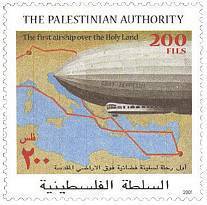 The launch of the Hindenburg in May 1936 inaugurated the first scheduled air service across the North Atlantic between Frankfurt and Lakehurst. Her first trip to the United States took 60 hours, and the return trip only a speedy 50. In 1936 she carried more than 1,300 passengers and several thousand pounds' weight of mail and cargo. She made ten successful round trips between Germany and the United States.
Her destruction, witnessed by horrified spectators in New Jersey, marked the end of the commercial use of airships.
The launch of the Hindenburg in May 1936 inaugurated the first scheduled air service across the North Atlantic between Frankfurt and Lakehurst. Her first trip to the United States took 60 hours, and the return trip only a speedy 50. In 1936 she carried more than 1,300 passengers and several thousand pounds' weight of mail and cargo. She made ten successful round trips between Germany and the United States.
Her destruction, witnessed by horrified spectators in New Jersey, marked the end of the commercial use of airships. Germany constructed one more large airship, the Graf Zeppelin II, which first flew on September 14, 1938. But the start of World War II, coupled with the disaster that had befallen the Hindenburg, kept this airship out of commercial service. She was scrapped in May 1940. |
|
|